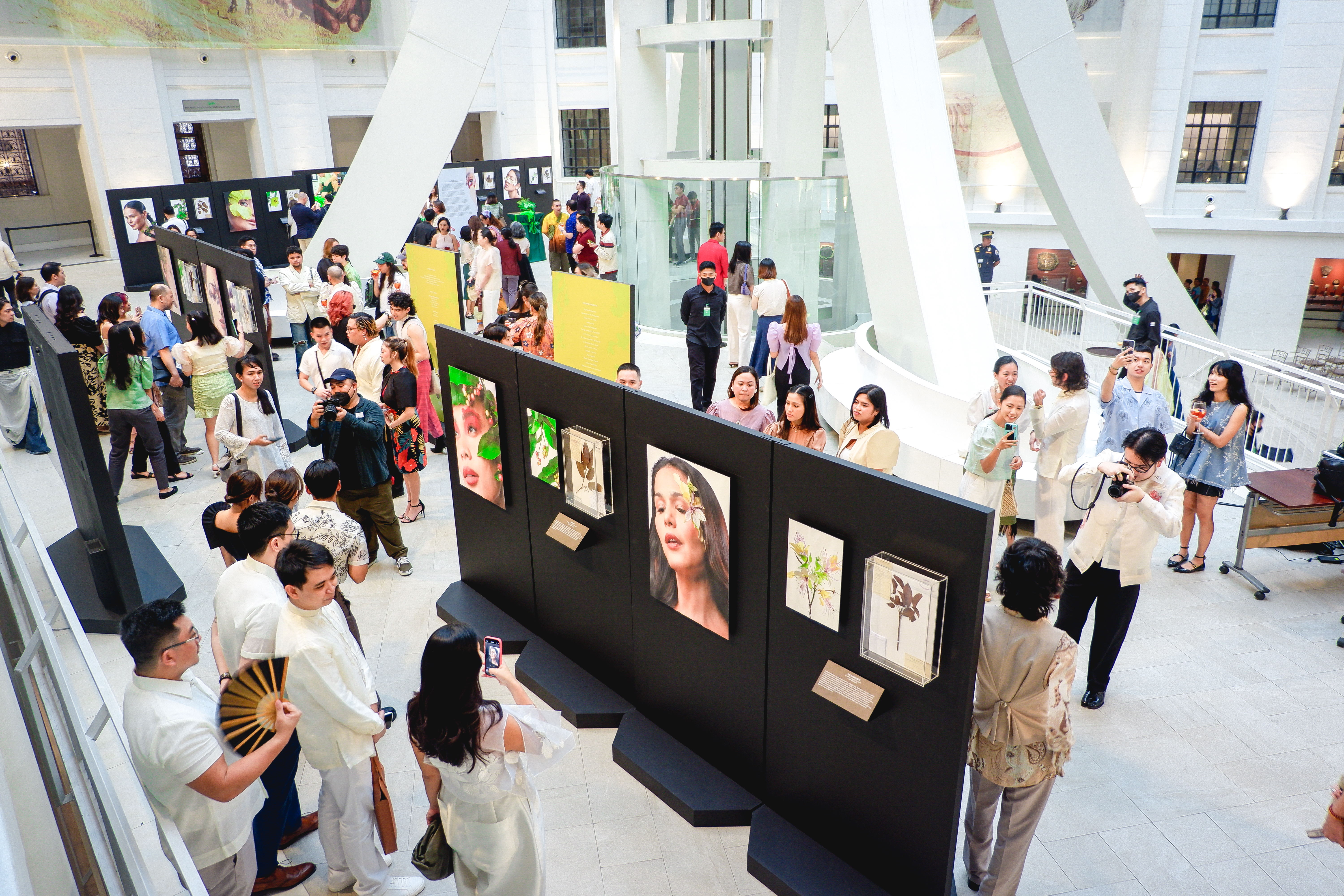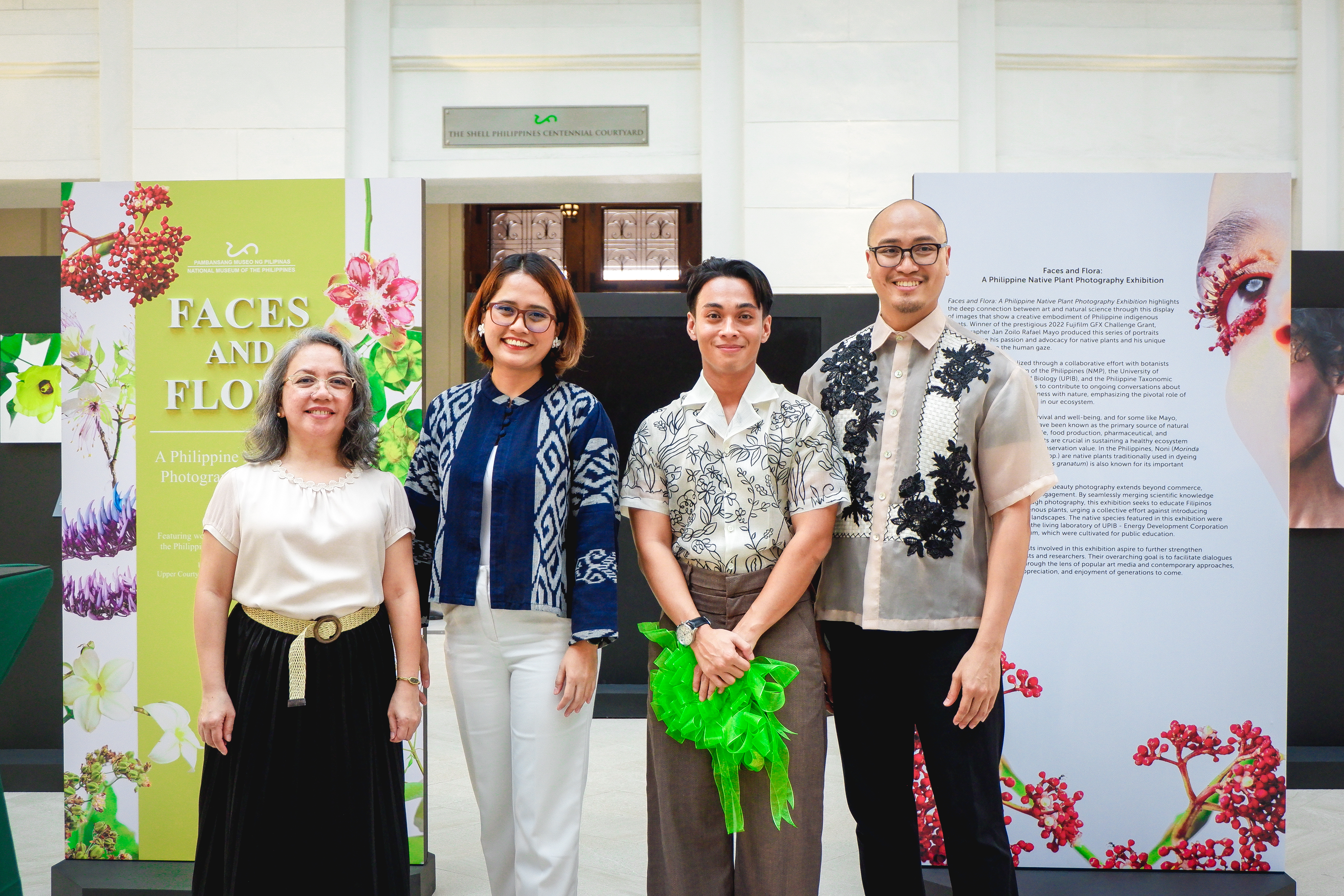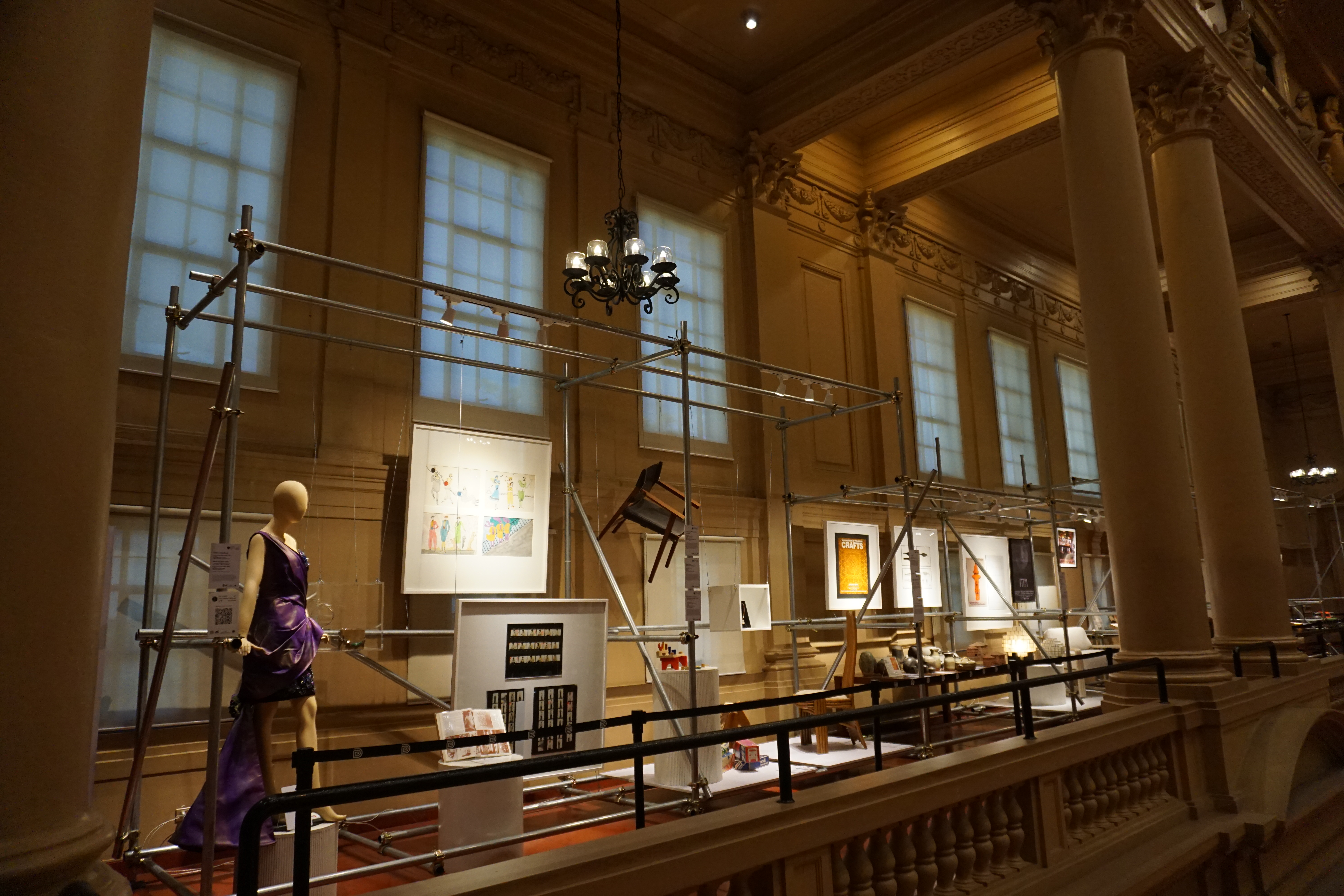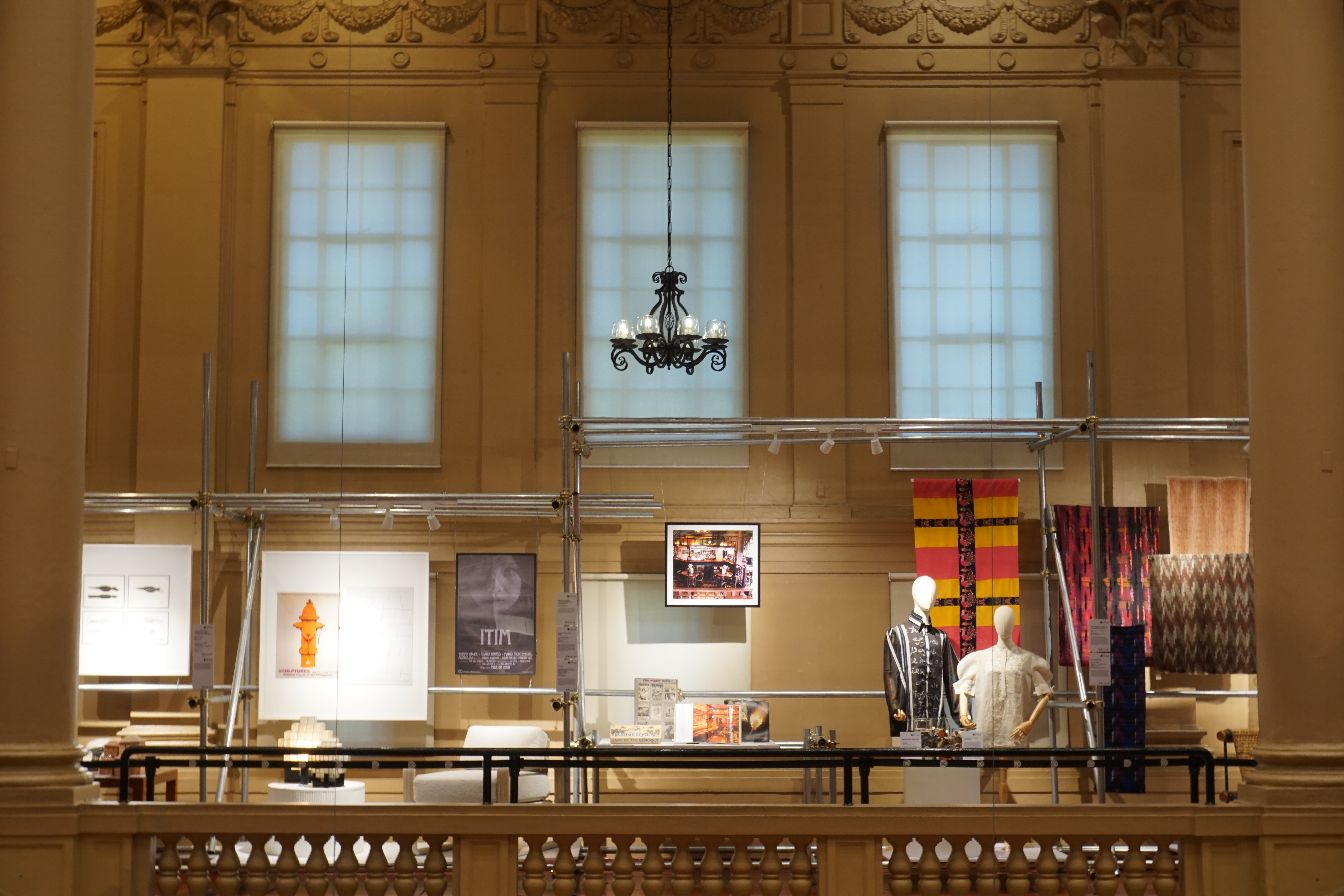Archives
Posted on: | John Raymund Solomon Posted in Bids and Awards, Uncategorized.
Posted on: | National Museum of the Philippines Posted in News and Events, Uncategorized.
Last February 15, in conjunction with National Arts Month 2024, the National Museum of the Philippines proudly unveiled “Faces and Flora: A Philippine Native Plant Photography Exhibition” at the National Museum of Natural History!


A collaboration with 2022 Fujifilm GFX Challenge Grantee Jan Zoilo Rafael Mayo, Faces and Flora highlights the deep connection between art and natural science through this display of images that show the creative embodiment of Philippine indigenous plants.



Mayo’s artistic process involved working with the UP Diliman Institute of Biology and the Philippine Taxonomic Initiative, exploring how popular forms of creative expression can help spread awareness about our native and endemic flora.
Faces and Flora is now OPEN to the public! Visit the exhibition at the Upper Courtyard of the National Museum of Natural History! Open Tuesdays to Sundays, 9 AM to 5 PM. Admission is FREE!
Posted on: | National Museum of the Philippines Posted in Uncategorized.

Do you know about a traditional art practice of this one family in Bulacan?
In celebration of #NationalArtsMonth2024, we feature the art of bamboo arch-making known as singkaban, which has been continuously practiced and transmitted by the Eligio family of Hagonoy!
The singkaban is a bamboo arch that spans across roads during fiestas, and is sometimes placed on church entrances and altars during Christmas and other special occasions. When designing and creating the singkaban, the kayas or the shaved portions should complement each part for the overall design of the arch. Incorporating changes to the arch is challenging if it has already been constructed, thus the different components must be finalized before its assembly.
The main designs used in the singkaban are—rayos/bilog, shaved bamboo sticks with ends nailed to a round piece of bamboo called doughnut, which resembles the wheel of a karitela (carriage); abaniko/pamaypay, a fan-shaped bamboo placed on top of the panels or headers; and the bulakaykay, a prominent feature of the singkaban poles. One technique employed by brothers Jeffrey and Gerry Eligio, grandsons of the late Master of Singkaban Maker Francisco “Kiko” Eligio in making the bulakaykay is the palubid or spiral technique, which creates a unique coiled effect on the bamboo poles. The half moon is a complementary design, a smaller type of abaniko/pamaypay positioned at both sides of the arch.
Generally, the singkaban is solely composed of shaved parts, but it can also be adorned with other designs depending on the theme. An example of this arch was made during the Palaisdaan Festival where the singkaban featured the bangus or milkfish, an export quality product of Hagonoy. This arch was later awarded 1st Place at the 2023 Singkaban Festival’s bamboo arch competition.
Folk art compared to other art forms is deeply rooted in a culture and community, reflecting not just artistry but to a greater degree, the community’s effort to continue and transmit the tradition. When Kiko Eligio was still alive, he once shared in an interview, “Hangga’t hindi bumibitaw ang mga Pilipino sa katutubong likhang sining, hindi mawawala ang sining ng singkaban [As long as Filipinos continue to hold dear onto our traditional arts, the art of singkaban will not fade].” His son Emil conducts workshops for the Alternative Learning System students of Bulacan, to preserve and transmit the tradition.
Posted on: | National Museum of the Philippines Posted in Uncategorized.
On 27 January, the National Museum of the Philippines unveiled the Important Cultural Property marker for the Pius XII Catholic Center, which coincided with the opening of the 127th Plenary Assembly of the Catholic Bishops Conference of the Philippines. In today’s #BuiltTraditionThursday, let us learn more about this remarkable institution!
Metropolitan Manila Archbishop Gabriel Reyes bought a one-and-a-half-hectare land situated in today’s United Nations Avenue, bordering Estero de Tanque creek, owned by the Compania General de Tabaco de Filipinas in Paco, Manila, for Php 695,000. Its proximity to the Manila Cathedral complex was strategic for implementing the works of Catholic organizations throughout the archdiocese.
Immediately after the acquisition of the tract of land, Archbishop Reyes commissioned Architect Juan Nakpil to design the building complex. The blueprints were already available in 1952 just before the archbishop died. His successor, Archbishop Rufino Cardinal Santos, promptly continued the project by laying the building’s cornerstones on 8 September 1958. Upon its completion, the complex was named Pope Pius XII Catholic Center after the reigning pontiff of that time. Construction commenced under the leadership of a commission of architects and builders, including Architects Jose Ma. Zaragoza, Fernando Ocampo, Arturo Manalac, and Imelda Borromeo Cancio, along with Engineers Vicente Esguerra and Mariano Sideco.
The complex served as a center for these various Catholic organizations. Years later, Archbishop Rufino Cardinal Santos and the Board of Trustees embarked on the expansion of the complex to serve other sectors like the students and young professionals. The board wanted the center to become a study area, a dwelling place, and a venue for wholesome recreation. Additional facilities like the chapel, the dormitories, and the gym were built. The complex was formally blessed and opened on 1 May 1964, coming into full operation by 1966.
The complex comprises an administration building, a chapel (now Santa Maria Goretti parish church), a ladies’ and men’s dormitory, a plenary hall and auditorium building, a gym and pool area, and a hotel. Access is through U.N. Avenue (south of the property), the main entrance to the administration building, and Correa St. (east of the property), leading directly to the ladies’ and men’s dormitory. The three-story Administration Building serves as offices and meeting rooms for managing and maintaining the complex, while the upper floors serve as living quarters for the Archdiocese of Manila. At the center of the Administration building is an open reception area leading to the chapel at the center of the property. Noteworthy are the stained-glass windows of the twelve (12) apostles designed by Galo Ocampo for the complex chapel. Adjacent to the chapel are two dormitories for rental, the ladies’ on the eastern side and the men’s on the western side of the property. Behind the chapel is the plenary hall and auditorium building. The gym, pool area, and hotel are situated on the northernmost side of the property. The architecture of all buildings generally follows the International style characterized by simple and straight-lined elevations, flat roofs, and open floor plans.
As a center of religious activities, it administered daily masses, served as a venue for sacraments such as matrimony and baptism, organized choirs, facilitated Bible seminars, and conducted social work among the depressed areas. The Pope Pius XII Catholic Center officially became a parish on 11 December 1982 under the patronage of Santa Maria Goretti.
References:
CCP Encyclopedia of Philippine Art, Volume III: Philippine Architecture. Manila: Cultural Center of the Philippines, 1994.
CCP Encyclopedia of Philippine Art, Volume IV: Philippine Architecture. Manila: Cultural Center of the Philippines, 1994.
Fleming, William. Arts and Ideas. New York: Holt, Rinehart and Winston, 1980.
Defeo, Ruben D. and Banson, Ma. Lourdes Zaragoza, Jose Maria V. Zaragoza: Architecture for God, For Man. Artpost Asia Inc. 2004.
Liturgical Guidelines on Church Architecture. Catholic Bishops’ Conference of the Philippines. Paulines, January 1999.
Posted on: | National Museum of the Philippines Posted in Uncategorized.

Last 6-7 December 2023, Bobby C. Orillaneda, Curator of our Maritime and Underwater Cultural Heritage Division (MUCHD), participated in the Workshop on World War Shipwrecks in Southeast Asia – Threats of Marine Pollution and Looting at Grand Kemang Hotel in Jakarta, Indonesia.
Organized by UNESCO, the workshop aims to enhance regional awareness and interest in sustainable development and protection of Underwater Cultural Heritage (UCH). With a particular focus on World War shipwrecks, the workshop also seeks to reflect on current challenges and to facilitate expert discussions and regional cooperation to identify key safeguarding actions for maritime cultural heritage.
Country Representatives from Cambodia, Indonesia, Malaysia, the Philippines, Thailand, Timor-Leste, and Vietnam as well as international experts from the United States of America, the United Kingdom, Belgium, Australia, and Japan comprised the attendees. Mr. Orillaneda presented the “Status of World War II Shipwreck Research in the Philippines” as a Country Report on Session 1: Human Threats and Impacts of Natural Disaster and Climate Change on Sunken Warships – Issues and Challenges. He also moderated Session 2: Legal Regime for Preservation and Protection of Wrecks of Historical or Archaeological Significance, and Session 3: Country Presentations – Issues and Challenges of Cambodia, Thailand, Timor-Leste, and Vietnam. He was also interviewed by UNESCO media and Dr. Noel Tan, Senior Archaeology Officer for the SEAMEO-SPAFA.

The conference participants have identified issues such as the 2001 Convention of the Protection of the Underwater Cultural Heritage, funding, infrastructure, government support, looting, climate change, shipwreck tourism, potentially polluting wrecks (PPW), and the values attached to WW shipwrecks. At the end of the workshop, a recommendation was drafted, recognizing the importance of Southeast Asian UCH, the threat it faces, and the need for cooperation among different stakeholders in each country as well as the larger Southeast Asian region with the help of the UNESCO 2001 Convention to address these issues.
Posted on: | National Museum of the Philippines Posted in Uncategorized.


Fifty years after its establishment, the Design Center of the Philippines, in partnership with the National Museum of the Philippines and the DTI’s Malikhaing Pinoy Program, presents a retrospective view of momentous developments in a large-scale exhibition surveying “50 Years of Philippine Design and Beyond.”


Curated by Marian Pastor Roces and designed by Architect Royal Pineda, “50 Years of Philippine Design and Beyond” offers an expanded view of the many design practices that drove export markets and changed material culture in the Philippines. The exhibition demonstrates the ability of designed objects, images, and systems to narrate new ideas, focus on cross-cultural links, and drive economic engines.


The exhibition is staged at Galleries XXV, XXVI, and 4/F Mezzanine of the National Museum of Fine Arts. It will be open for public viewing after the holiday season.
The National Museum of Fine Arts is open Tuesdays to Sundays, from 9 AM to 6 PM. Admission is FREE!
#NationalMuseumPH #DesignCenterofThePhilippines #50YearsofPHDesign #PhilippineDesign